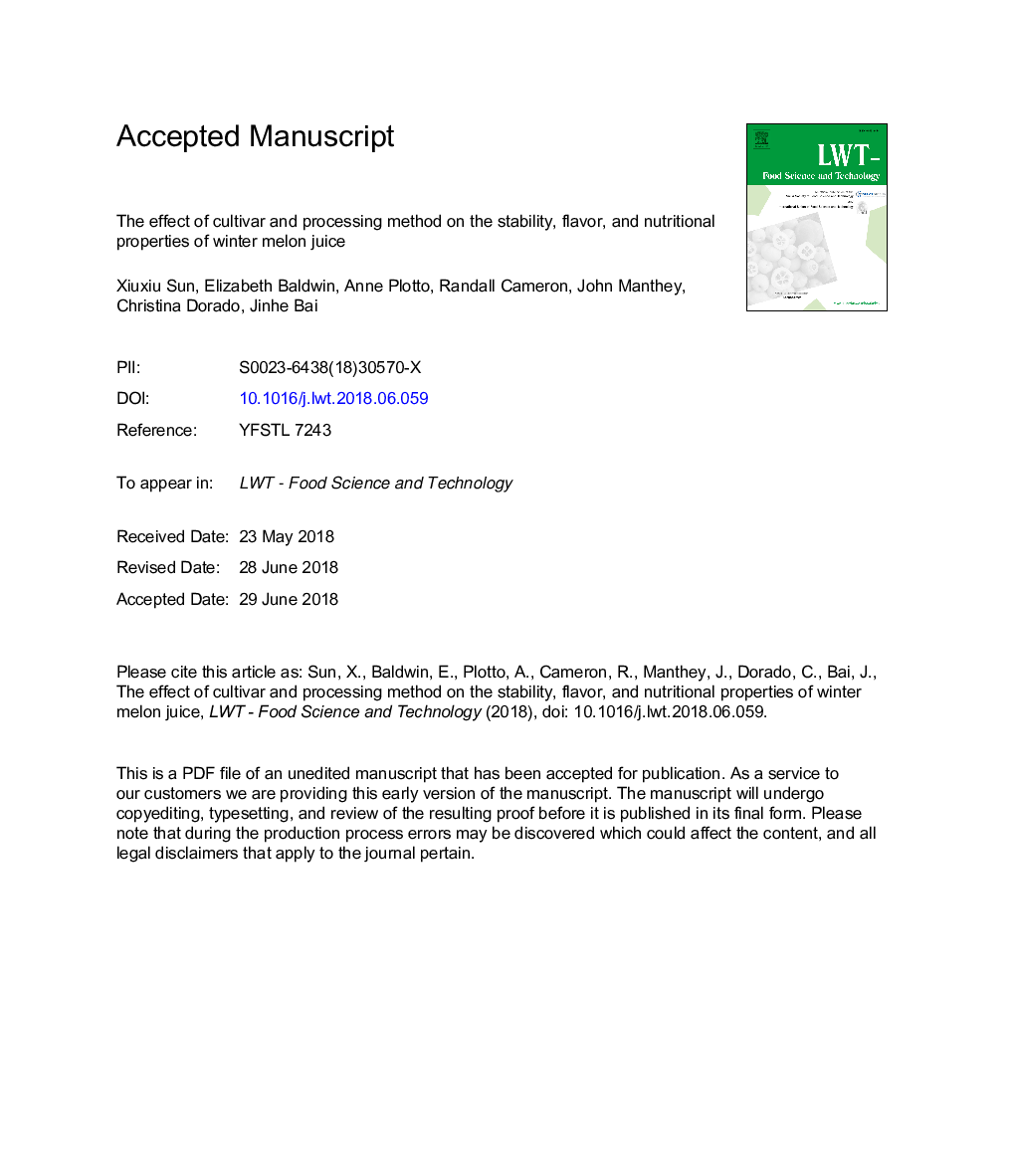| Article ID | Journal | Published Year | Pages | File Type |
|---|---|---|---|---|
| 8890108 | LWT - Food Science and Technology | 2018 | 34 Pages |
Abstract
Two major winter melon (Benincasa hispida) cultivars, waxy 'Large Round' and non-waxy 'Southern Dark Skin' were used for comparison of the physical, chemical and sensory properties of processed juice. Two types of juice were processed by using non-waxy fruits: non-waxy juice without peel (NW) and non-waxy juice with peel (NWP). For waxy fruit, the juice was prepared without peel (W) only. Peel tissues contributed firm particles, and more primary and secondary metabolites. The total tyrosine, phenylalanine, and dietary fiber content in NWP were 12.14â¯mgâ¯Lâ1, 11.78â¯mgâ¯Lâ1 and 1.04% respectively, which were significantly higher than in W and NW. However, NWP had more off-flavor, such as hexanal and (E)-2-hexenal, less stability, and higher pulpy mouthfeel. W samples were more stable than NW and NWP during storage without visible sedimentation. The glucose, fructose and TA content of W were 0.58%, 0.58 and 0.23% respectively, which were significantly lower than in NW and NWP. The W juice also had less dimethyl disulfide, and hexanal, and was better rated by the sensory panel for having lower sour, salty, bitter, grassy and cooked vegetable characteristics. The results indicate that the waxy 'Large Round' melons are a viable candidate for juice processing.
Related Topics
Life Sciences
Agricultural and Biological Sciences
Food Science
Authors
Xiuxiu Sun, Elizabeth Baldwin, Anne Plotto, Randall Cameron, John Manthey, Christina Dorado, Jinhe Bai,
